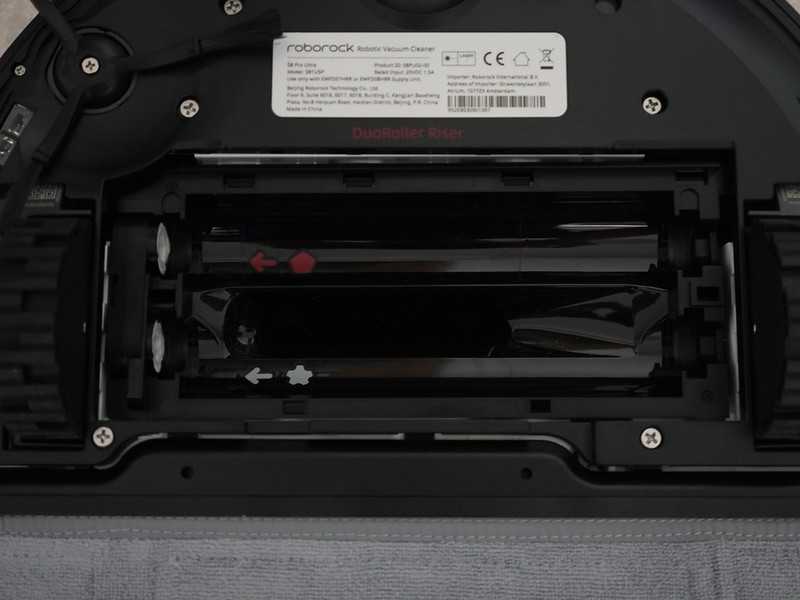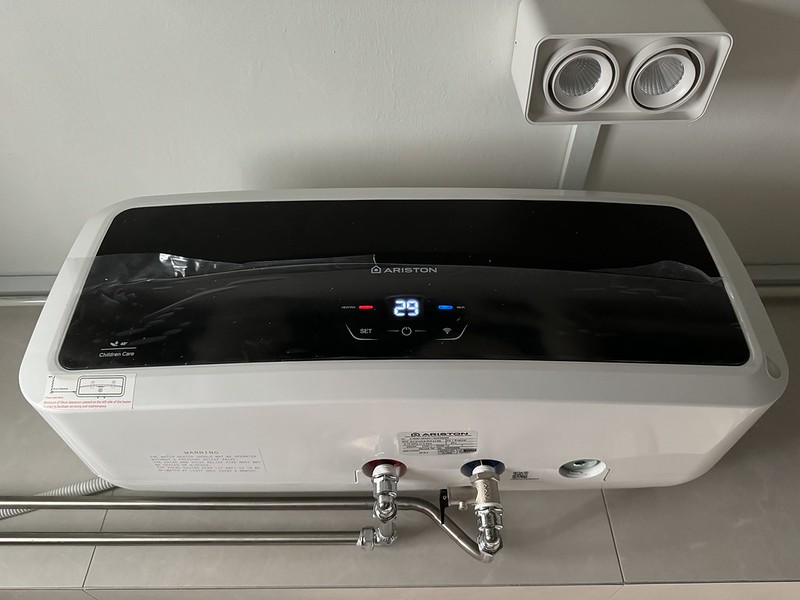Roborock S8 Pro Ultra Review
Roborock S8 Pro Ultra was launched 2 months back in Singapore. Roborock S8 Pro Ultra retails for S$1,769.90 on Shopee or Lazada. You can probably get it cheaper during double-digit sales day since you will be able to stack various vouchers from the platform on top of it as well.
Two colors are available for the S8 Pro Ultra, black and white.
The robot, S8 itself, features:
- 6000PA Hyper Suction
- Dual Roller Brush
- Upgraded VibraRise 2.0 Mopping System
- 3D AI Obstacle Avoidance
The Pro Ultra in the product name refers to the flagship dock where it does:
- Auto-refill of water to the robot from the dock’s clean water tank
- Self-emptying dirty water from the robot to the dock’s dirty water tank
- Self-emptying of dirt from the robot’s dustbin to the dock’s dust bag
- Self-washing of robot’s mop pad
- Self-drying of robot’s mop pad after cleaning
TL;DR
Pros:
- 3D AI Obstacle Avoidance is accurate
- All-in-one Dock
- Roborock app is good
- Good vacuum sucking power
- Good mopping strength
Cons
- Expensive, but it is the best robot vacuum cleaner that money can buy
- Lack of auto dispensing of floor cleaner
Specifications
- Vacuum Suction Power: 6,000 Pa
- Sonic Mopping: 3,000 vibrations per minute
- Robot’s Water Tank: 200 ml
- Robot’s Dust Bin: 350 ml
- Battery Capacity: 5,200 mAh
- Mop Lifting Height: 5 mm
- Dock’s Clean Water Tank: 3L
- Dock’s Dirty Water Tank: 2.5L
- Dock’s Disposable Dustbag: 2.5L
- Dock’s Cleaning Module: 600 rpm
Unboxing
- 1x S8 Robot Vacuum
- 1x Pro Ultra Dock (Empty, Wash, Refill + Self Drying Dock)
- 2x Dust bag (1 pre-installed, 1 extra)
- 1x Power Cable (EU 2-pin plug)
- 1x Quick Start Guide
- 1x user Manual
The big carton box comes with three layers. The top layer is the dock’s base plate. The middle layer is the S8 Robot Vacuum, and the Pro Ultra Dock is at the bottom.


Design
I have the review unit in white, which I think looks better than black. The only potential downside is that white might turn yellowish over the years. On the other hand, everything is uniformly back, so it will not stand out as much.


You get the black accent color for the white on the bottom half of the dock.

Dock
S8 Pro Ultra’s dock is an open-top design. You can remove the clean and dirty water tank directly since it has no cover.

The extreme left is the 2.5L dirty water tank. Two outlets denote it. I am guessing one is from the robot, and the other is from the dock’s mop washing tray.
The middle’s 3L tank is for clean water that refills your robot’s 200ml water tank.
Lastly, on the extreme right is the 2.5L disposable dust bag your robot will auto-empty into from its 350ml dustbin. It is the only portion that you need to remove a cover to access the contents.

S8 Pro Ultra’s dock feels more premium than both my Roborock G10‘s dock and DreameBot L10s Ultra‘s dock. It is more apparent when you look at the dock’s water tank design.

I prefer coverless designs like the Roborock S8 Pro Ultra’s dock instead of the Roborock G10 and DreameBot L10s Ultra’s dock. Because you will need to top-up clean water and empty the dirty water often, having a coverless design reduces one step required in that process.
Robot
The front houses the Reactive 3D Obstacle Avoidance system, which uses 3D structured light and infrared imaging technology to detect and avoid obstacles. The system can detect up to 42 objects.

I have not played with the S7 MaxV Ultra. But from what I understand, that machine uses a camera to detect obstacles so that it can show a photo of it in the Roborock app. Since S8 Pro Ultra uses light instead of a camera, it can no longer capture a picture of the obstacle when it sees it. Instead, it will just show a generic graphic.
To the left and right of the Reactive 3D Obstacle Avoidance system houses the charging pins that draw power from the dock.
At the back houses the built-in 200ml water tank. I think this is the first time Roborock has used a built-in water tank. For previous models like the S7 and the G10, they are removable. The only impact functionality is if the water tank spoils and you need to change it. The chances of that happening are very low.

On top has the three standard Roborock buttons (Spot Clean, Power, Dock) and the LiDAR sensor.

You can access the robot’s 350 ml dustbin when you open the top cover.


The bottom houses the dual roller brush and VibraRise 2.0 mopping system.

Previous models of Roborock only come with a single roller brush. From S8 onwards, we can expect to see dual roller brushes in more models. iRobot Roomba has had dual roller brushes for ages. Finally, Roborock caught up with it.
Dual roller brushes are said to remove more dirt, and lesser hairs will be entangled with the roller. Though in real-world usage, I think it will make little difference.

Like the G10, the mopping module is built-in. Whereas on the S7, the whole mopping module can be removed. S8 is the first model to have VibraRise 2.0 Mopping System. There are now two vibrating modules strip instead of one.

Setup
Setup is done by scanning the QR code using the Roborock app and following the on-screen instructions. It is straightforward.

Next, you can ask the robot to do a quick mapping of your house.


Mapping
The mapping features are the same on the Roborock Q7 Max.
Since I have reviewed it in detail before, I will not cover it here. You can read it on Roborock Q7 Max Review.

Settings
Settings are almost the same as the previous Roborock models.


The standard carpet settings. They only change the name from Rise to Dynamic Lift, which means the same thing.

This Floor Cleaning setting is not new, but I have yet to mention it. You can clean the floor along its direction to minimize scrapping against the floor seams.

You can set the floor type in the map.

Since the dock has multiple roles now, there are more settings to control.

For mop wash frequency, you can set how often the robot will return to the dock to wash the mop. Here you can set by room or time. I wish I could set it by area, which is more accurate. DreameBot L10s Ultra allows you to do that.

The washing mode is now split into its own settings page. Previously, it was together with the mop wash frequency.

Empty mode is the same since S7.

Auto drying duration is new for me since it was not there on the G10. There are only three values you can choose from, 2H, 3H, or 4H.

Since S7 MaxV, there is an off-peak charging option, which is not applicable in Singapore.

Maintenance is still needed on the robot, like washing the filter after 150 hours of usage, cleaning the main brush after 300 hours, and the side brush after 200 hours.

I also notice that for S8, it supports auto firmware update.

Using It
Usually, the default settings are good enough for me. In this case, suction power is balanced, so it is quieter. Moderate scrub intensity so it will not scratch the floor.

Route seems to be a new setting. You can choose between the fast and standard routes. Of course, a fast route will result in some spots being missed. Only recommended if you need to have your house cleaned quickly, as your friends are coming over at the last minute.

There is also dock info now that shows the various tanks’ status.

After cleaning, the mopping pad will be hot air dried to prevent it from smelling. This is shown in the text above the clean button.

Reactive 3D
Here are some of the Reactive 3D settings you can set. It can even detect your pet moving and tell the difference.

I am impressed with the Reaction 3D Obstacle Avoidance system. I have a few cloth mats on the floor, which the S8 manages to detect and avoid most of them. So far, none of the robot vacuum cleaners I have manages to do it. So I can see why Roborock switches to using light instead of a camera, as it is much more accurate. The only cloth mat that still got stuck is a thin white “Good Morning” towel that we use it as a mat.

It can even detect “easily trapped furniture” and try to avoid it. Sometimes my robot vacuum cleaner will get stuck within the chair’s four legs and cannot get out. This doesn’t happen with the S8.

Interestingly it also detects a weighing scale on the floor and avoids it. For some robots, if your weighing scale is low enough, it will climb on top of it and get stuck.

Compared With Dreame L10S Ultra
The S8 Pro Ultra dock does a better job of washing the mopping pad as there are bristles on the brush to scrub the pad thoroughly. On the Dreame L10S Ultra, the mopping pad spins on a plastic tray with recess dots, which doesn’t really scrub the mopping pad.
One additional feature of the Dreame L10S Ultra is the automatic dispensing of the Dreame Multi-Surface Floor Cleaner into the water tank of the robot. So it doesn’t clean your floor with just water. The S8 Pro Ultra lacks this feature.
This is just a slightly bad user experience. With the S8 Pro Ultra, you cannot charge the robot and do some of the maintenance processes simultaneously because the charging pin is at the front while the mop and water tank are at the back.

After cleaning, S8 Pro Ultra does the cleaning of mop pad first, before rotating 180° to do the emptying of the dustbin, and then it charges.

However, since they are on the same side, the Dreame L10S Ultra can do both charging and maintenance processes simultaneously.
Conclusion
Retailing at S$1,769.90, S8 Pro Ultra is a costly undertaking. But it is the best robot vacuum cleaner that money can buy, replacing Roborock’s previous flagship, the S7 MaxV Ultra.
If you are not using any existing robot vacuum cleaner, I recommend getting the Roborock S8 Pro Ultra. You will not go wrong with it.
However, if you use the S7, the price justification is not worth it against the incremental upgrades.
If you are on S5, the significant differences between the S5 and S8 are worth an upgrade.




